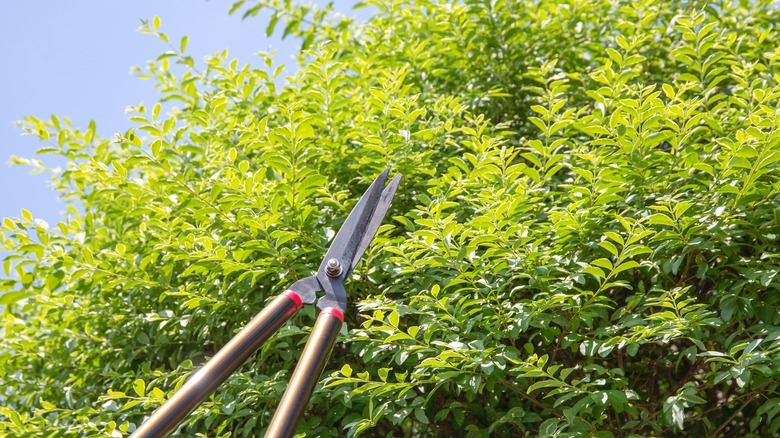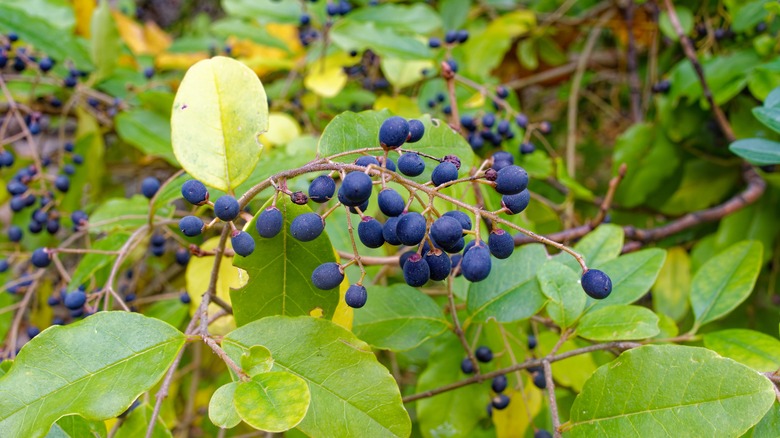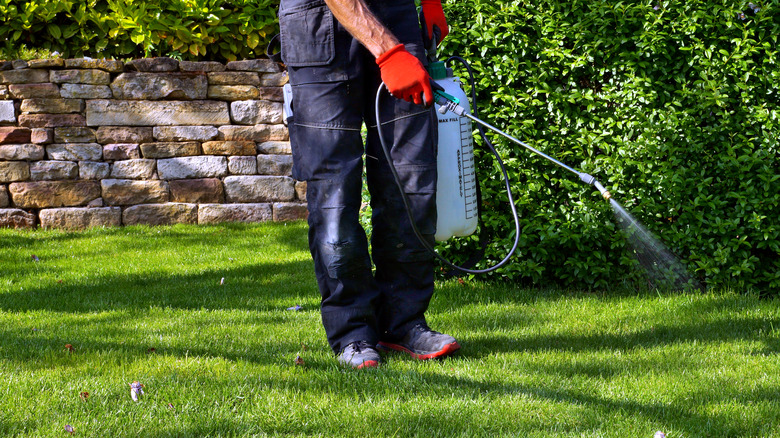The Best Way To Get Rid Of Fast-Growing Chinese Privet In Your Lawn
Many common garden weeds and invasive plant species can appear in your lawn and wreak havoc, but some can be more difficult than others. Certain species can be particularly hard to get rid of and can cause a lot of damage with little sign of going away, even when using standard weed-killing tactics. One non-native plant that is considered invasive and tricky to deal with is Chinese privet (Ligustrum sinense). This mid-sized shrub reproduces quickly and grows well just about anywhere and in a large range of sun and soil conditions. Be sure that you never purchase Chinese privet or bring it to your yard willingly, since it can take over fast.
Unfortunately, even if you don't plant it yourself, it may pop up on its own. The berries of these shrubs are distributed by birds, and when they arrive in your lawn, they sprout up easily and spread fast. Burning is one eco-friendly option for removing Chinese privet. Stump torching is better for the environment than using herbicides and prevents harm to native plants and the environment while effectively eliminating the weed. Other strategies can also help you get rid of Chinese privet as well, such as pulling it out by hand, using a weed wrench, and as a last resort, using herbicide — but you'll have to keep at it and stay vigilant.
Methods for eliminating Chinese privet
To fully eliminate Chinese privet, you'll likely need to use a combination of different methods. You'll also have to repeat some of these mechanical control methods multiple times. Mechanical control methods refer to the use of tools and physical techniques to remove weeds. Chinese privet spreads easily and can be quite difficult to remove entirely at once. For small seedlings and saplings, hand pull the plant, being sure to remove as much of the root as possible. Otherwise, new stalks will grow. A weed wrench may help remove the roots, but success isn't guaranteed.
You can try torch burning for more mature plants. Start by cutting the stems to the ground in April or May. Once they re-sprout in the fall, burn them with a weed torch — this also kills roots and disrupts photosynthesis. Because it's persistent, the plant may sprout several more times over the following year or so — use the torch again each time. After three or four treatments and two years total, most Chinese privet plants will be fully eliminated. To stay safe, be ready with water and a fire extinguisher in case something goes wrong, and wear safety gear including fire-protective gloves, pants, and closed shoes. Avoid using a torch outdoors if there are many other flammable materials nearby or poisonous plants such as poison ivy, since the vapors will be harmful. If you are unsure, it may be helpful to consult a weed control specialist.
Using herbicides to eliminate Chinese privet
If the other techniques aren't working, consider using an herbicide on your lawn to prevent future growth and help stamp it out. Since this is a woody plant, the best options to consider include basal bark, cut stump, or foliar herbicide treatments. A basal bark treatment is best for stems with a diameter of six inches or less and includes applying herbicide directly to the tree's thin bark. A cut stump treatment includes applying herbicide immediately after the tree has been cut down to a stump. Foliar treatments involve applying herbicide directly to the foliage and is a good option if you're treating large areas of privet at once. Whenever you use herbicides you should always follow label directions. The instructions for these methods can be complex, however, so you'll need to follow them carefully to remove Chinese privet successfully.
Remember that you should be careful when using herbicides in your yard. Herbicides can damage lawn health and have harmful environmental effects. More than that, they can also kill microorganisms, insects, and any beneficial worms you may have attracted to your garden. Also, be aware that plants can develop a resistance to the chemicals you apply so you'll want to take the right approach to prevent this from happening. Overusing weed killers can make it harder to remove them in the future.


